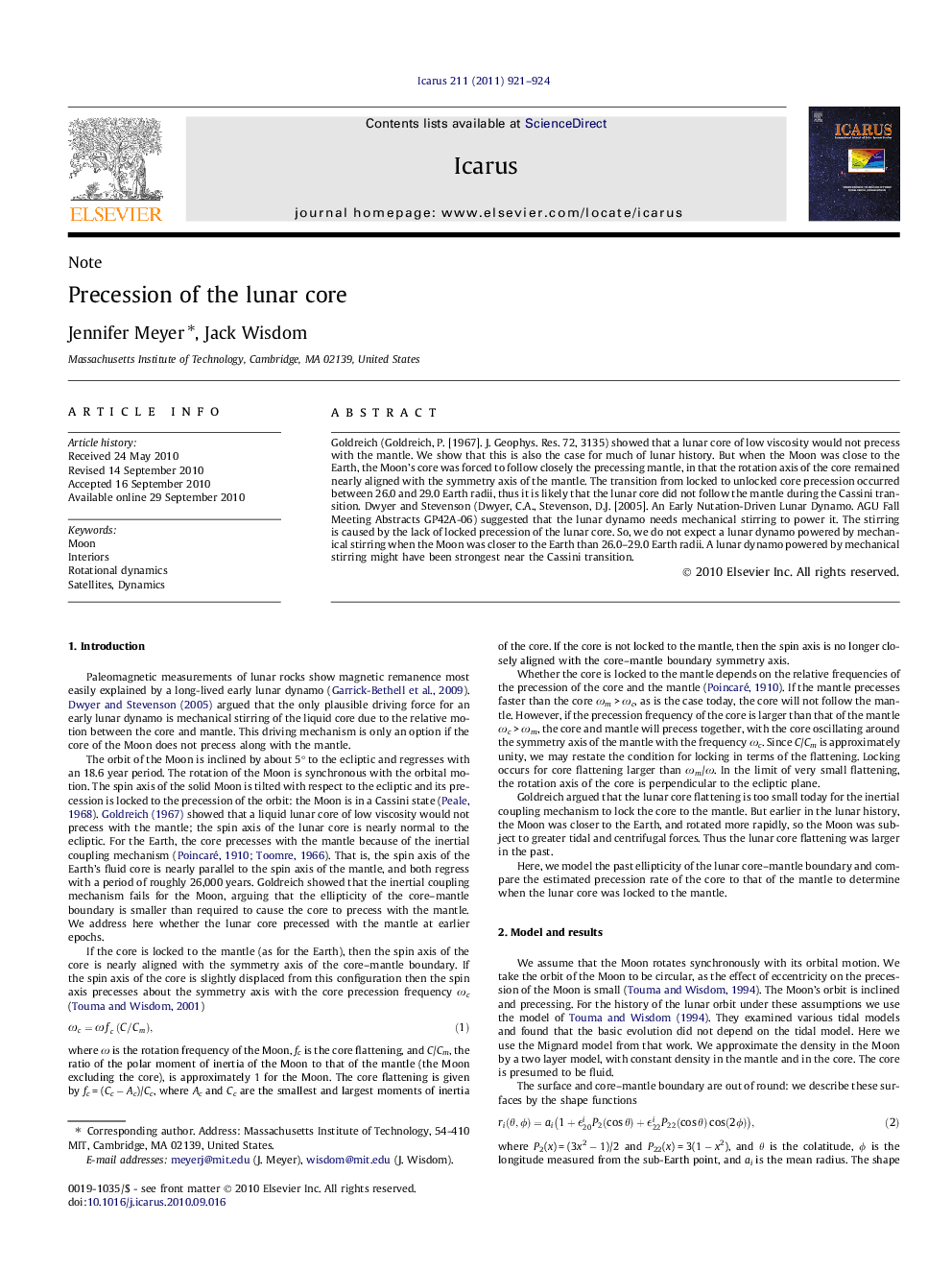| کد مقاله | کد نشریه | سال انتشار | مقاله انگلیسی | نسخه تمام متن |
|---|---|---|---|---|
| 1773828 | 1021145 | 2011 | 4 صفحه PDF | دانلود رایگان |

Goldreich (Goldreich, P. [1967]. J. Geophys. Res. 72, 3135) showed that a lunar core of low viscosity would not precess with the mantle. We show that this is also the case for much of lunar history. But when the Moon was close to the Earth, the Moon’s core was forced to follow closely the precessing mantle, in that the rotation axis of the core remained nearly aligned with the symmetry axis of the mantle. The transition from locked to unlocked core precession occurred between 26.0 and 29.0 Earth radii, thus it is likely that the lunar core did not follow the mantle during the Cassini transition. Dwyer and Stevenson (Dwyer, C.A., Stevenson, D.J. [2005]. An Early Nutation-Driven Lunar Dynamo. AGU Fall Meeting Abstracts GP42A-06) suggested that the lunar dynamo needs mechanical stirring to power it. The stirring is caused by the lack of locked precession of the lunar core. So, we do not expect a lunar dynamo powered by mechanical stirring when the Moon was closer to the Earth than 26.0–29.0 Earth radii. A lunar dynamo powered by mechanical stirring might have been strongest near the Cassini transition.
Journal: Icarus - Volume 211, Issue 1, January 2011, Pages 921–924